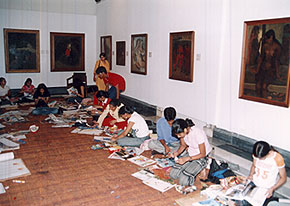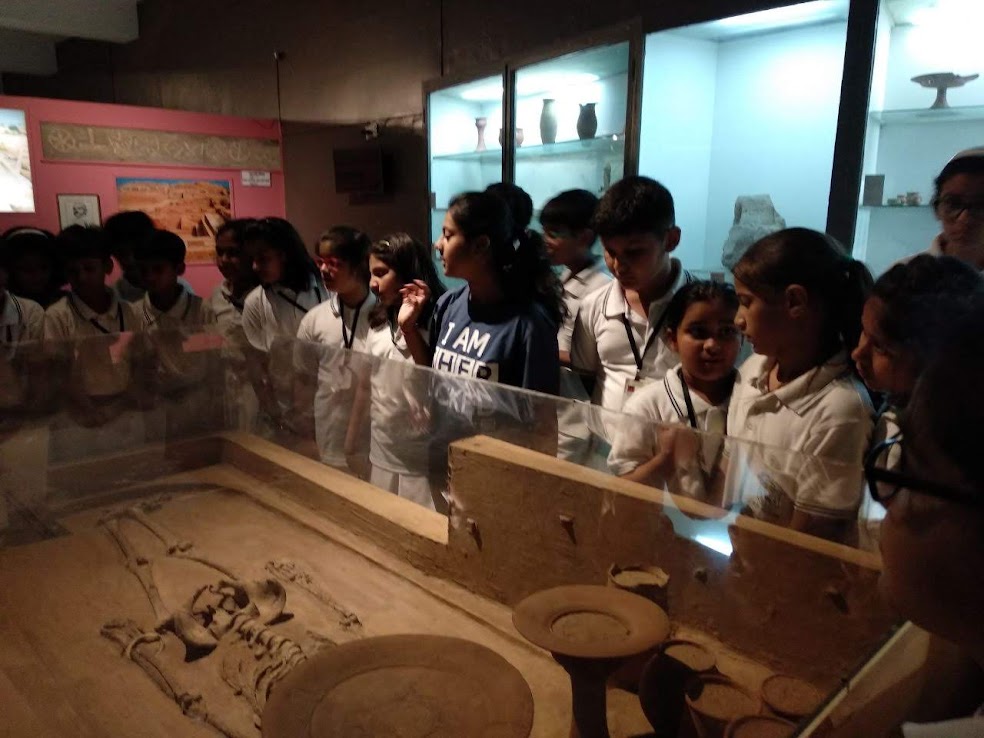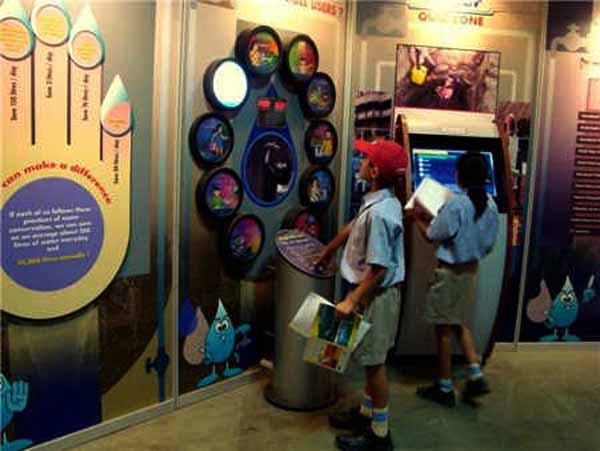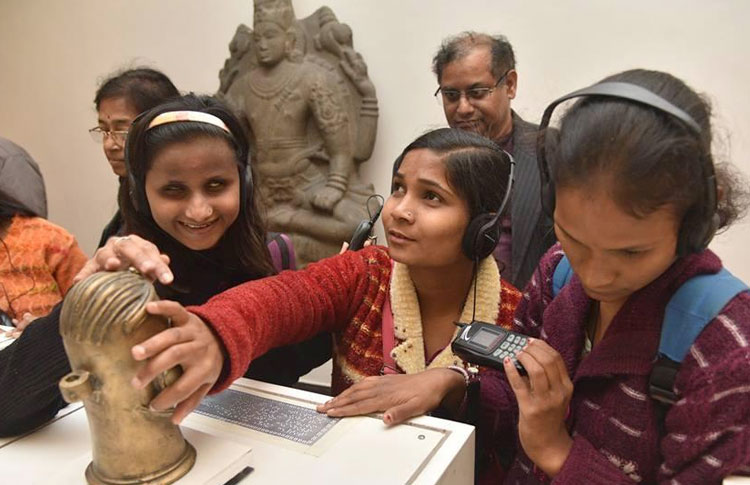WHAT IS A MUSEUM?
A Museum is a storehouse of antique objects of history and heritage. It’s an institution serving society that displays historical, economic, social, artistic and cultural significance objects. It is in-house, open-air or virtual, conserves objects and exhibits its collection for everyday people. It also functions to disseminate knowledge among the masses. The ICOM justifies the above statement with its recently published definition:
“A museum is a not-for-profit, permanent institution in the service of society that researches, collects, conserves, interprets and exhibits tangible and intangible heritage. Open to the public, accessible and inclusive; museums foster diversity and sustainability. They operate and communicate ethically, professionally and with the participation of communities, offering varied experiences for education, enjoyment, reflection and knowledge sharing” (ICOM 2022)
MUSEUM AND INFORMAL EDUCATION
Museum education as a museum function plays a vital role. Museum education is multidimensional and relatively informal, where the masses can learn. Museum informal or non-formal education doesn’t bind students in a classroom, which makes it easy to construct information for students. Moreover, learning here is not just fact learning but gaining experiences and emotions through the objects. Formal learning is intentional from the learner’s perspective, is typically provided by a school or other institution that offers education or training, has set standards (such as learning objectives, allotted amounts of time for learning, or learning support), and frequently results in certification. Non-formal education is similarly deliberate, although it usually takes place outside official settings (e.g. school, university). Although a certificate is scarce, it incorporates some learning objectives or outcomes. Because they have visitor outcomes and participants frequently anticipate learning something, most learning programs and events at museums, including outreach and exhibitions, fit under the non-formal learning category. Most of the time, informal learning is not done on purpose. It comes from routine activities connected to a job, family, or pleasure. It usually doesn’t result in certification and isn’t structured (regarding learning objectives, learning time, or learning assistance).
Museums have several educational programs aimed at different target groups. Organizations conduct under a separate education department, and the charge of a staff (Curator and Education officer) is responsible for it. There are two types of museum educational programs: In-reach and Outreach educational programs. In-reach programs are conducted within the museum walls by education staff, with the help of the collection of museums. For example: – Guided lectures, Gallery talks, Special Lectures, Museum Games, Short Movies, Animations, Storytelling, Discovery rooms and so on. On the other hand, Outreach programs are conducted outside the museum premises, taken by the museum’s educational staff, usually with replicas. It includes: – Mobile Exhibitions, Travelling Exhibitions, School Loan services, Workshops, and Special Programs like- quizzes, fairs, drama, and so on.
INREACH EDUCATIONAL PROGRAMS IN MUSEUMS: IMPACT UPON SCHOOL STUDENTS: Educational programs involve students viewing art and participating in hands-on art projects. It has been observed from a survey of random school students (of age group 10-14) at the National Gallery of Modern Art, New Delhi, about what and how they perceive knowledge in the museum and how it impacts them. They expressed how much they appreciated the sketching activity and the fascinating exhibitions. According to the survey findings, students examine significant concepts and issues from the curriculum by creating art, which enables them to communicate their thoughts visually. It eventually supports Vygotsky’s Social Learning Theory. Likewise, this supports learners’ acquisition of analytical and critical-thinking abilities, promoting cognitive growth.

According to Piaget’sCognitive development theory, learning is an internal mental activity rather than an action under external control. The internal cognitive structures of the learner are modified by prior learning and experiences. A learner makes meaning of new knowledge through observation, categorization, and the production of generalizations. It is a dynamic and cumulative process which must enhance interpersonal connections and be personally meaningful. Informal education, group problem-solving and parental and peer participation. It includes in-reach programs such as Guided Tours, Interactive Exhibitions and Displays.

According to Bruner’s Discovery Learning Theory, learners construct their knowledge. The best way to learn is to discover rather than be told. Individuals are encouraged to use their learning structure. Individuals build their understandings based on their own experiences and reflection. Individual interactions involving surrounding social environments are associated with learning. The context of learning influences the construction of knowledge. For instance, The National Science Centre in Delhi is a museum that fits this learning theory better. The objects there are exhibited in such a way as to engage students to learn and discover new things.

It is believed that enjoyment precedes learning. Students prefer to be actively immersed in fun, exciting learning tasks to maintain the motivation to comprehend and assimilate new information. Furthermore, Dewey’s Experiential Learning theory supports Hands-on Learning. It means Learning through doing and practising. Thus, a museum may foster children’s sense of wonder by encouraging engaging, hands-on interactions with actual museum objects. A child’s natural enthusiasm for learning should be encouraged through self-paced, multisensory, and socially interactive environments such as those found in museums that offer free choice. Students can examine and research objects and events in ways that textbooks cannot work in this context. For instance: The National Museum in Delhi has a gallery called “Anubhav” that displays replicas of some of the museum’s objects. This gallery was created for visually impaired children to give them hands-on experience as part of the museum’s in-reach educational programme.

Financial support is essential when carrying out some educational programmes and activities. When it comes to informal learning in museums, only important museums, mainly those funded by the government, can interact better with students. For instance, The National Museum in Delhi receives funding from the Ministry of Culture and thus has a solid financial foundation to run the museum. On the other hand, some private museums, such as the Heritage Transport Museum in Gurugram, continue to receive generous funding. In contrast, Vechaar Utensils Museum Ahmadabad is a private museum that still needs adequate funding.
Furthermore, it is also contingent on a curator’s ability to conduct exhibitions in such a way that attracts visitors. Interpretation and communication techniques generally support reaching educational programmes in museums. The object communicates with visitors through interactive mediums such as labels, audio-visual, lights, panels, animations, etc.
Therefore, learning through art promotes critical thinking. Museum education is a necessity of the time, and education services are also necessary for a museum to attract visitors. It is a key to alleviating several museum collection illusions. Education is an essential function of a museum because it makes informal or non-formal learning flexible, fun, and less systematic for visitors.